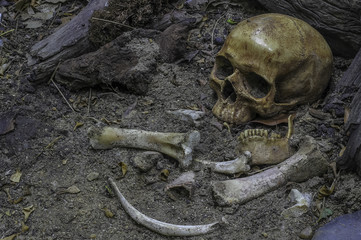
<p>In this activity children take on the role of palaeontologists to work out if fossil remains could have come from a bipedal upright human.</p>
Description
Scientists made an exciting discovery in Ethiopia - four-million-year-old fossils! They believe the fossils may be from the first bipedal human ancestor, who walked upright like modern humans.
Children take on the role of palaeontologists and work out if the fossil remains could, indeed have come from a bipedal upright human. There is then the opportunity to use information to draw a picture of another human ancestor - the so-called 'Lucy', whose fossilised bones were found in Ethiopia in 1974.
Learning Objective:
- Scientists believe that humans are descended from apes. Much of the evidence for this comes from the fossilised remains of our ancestors' bones.
Children will learn:
- To discuss their written work comparing human and chimpanzee bones.
- That the bones of humans and their ancestors are suitable for the types of activities they do.
- The functions of different parts of human and chimpanzee skeletons.
These resources were initially developed in partnership with the Centre for Science Education, Sheffield Hallam University.



